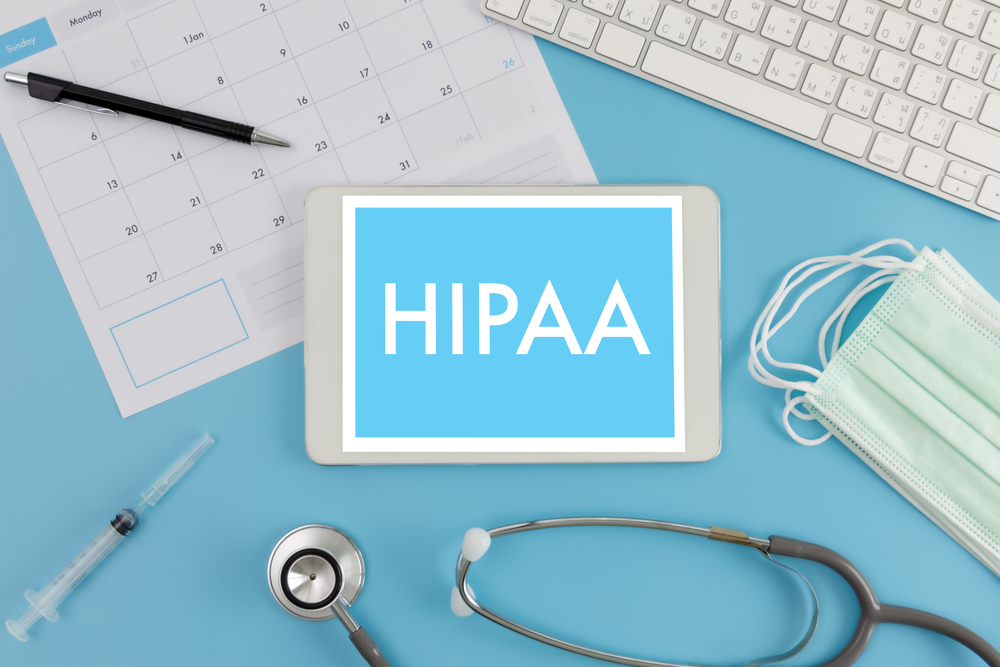Healthcare and Interoperability
A Comprehensive Guide to EHR Integration
Compare All PlansStart Faxing Now
The advent of electronic health records (EHRs) has transformed the way patient information is collected and shared among healthcare providers, resulting in enhanced efficiency in healthcare delivery and improved overall patient outcomes. However, EHRs have also led to the fragmentation of healthcare systems, with providers and healthcare entities adopting different EHR solutions; this, in turn, has resulted in clinical data silos and inefficiencies arising from a lack of EHR harmonization. This disconnect makes it difficult for healthcare providers to paint a complete picture of a patient’s medical profile and hinders their ability to render informed care decisions.
This guide analyzes how EHR integration addresses these issues by connecting disparate healthcare systems via a single platform and interface. By enabling patient data to flow freely across varying EHR workflows, a well-designed integration allows healthcare providers to fully realize the benefits of EHRs: end-to-end clinical visibility, improved patient care and optimized workflow efficiencies.
Understanding EHR Integration
According to a recent survey by the American Hospital Association, most office-based physicians (78%) and nearly all non-federal acute care hospitals (96%) have adopted a certified EHR system. Given the ubiquity of EHR systems, the ability for these solutions to communicate with each other across the spectrum of care is a crucial requirement. EHR integration is, therefore, a critical enabler of digital transformation in healthcare.
What Is EHR Integration?
EHR integration is the seamless interoperability and connectivity between different EHR systems, healthcare applications and related technologies. With a properly working EHR integration, diverse healthcare systems can communicate, share data and provide a cohesive, comprehensive view of a patient’s medical history and care. For example, an optimal EHR integration allows disparate players and providers across the healthcare value chain to access a patient’s digital medical history and relevant data: diagnosis, medications, allergies, test results and treatment plans, and more. All the necessary medical background information for a patient, with the requisite detail level, is viewed and shared securely via an EHR integration with relevant healthcare parties.
Why Is EHR Integration Important?
As the rise of EHR has eliminated the problems that arise with paper records (e.g., data loss, lack of standards, errors related to manual data entry and paper-based document management), EHR integration is now necessary to address the resulting islands of disparate data and lack of visibility into a patient’s complete medical profile. EHR integration enables the aggregation of comprehensive patient information from many different sources into a single, unified record. With a holistic view of a patient’s health data, healthcare providers can make better-informed healthcare decisions, as well as aggregate and analyze patient data from diverse sources to implement broader preventative measures and improve overall health outcomes throughout the community.
The Benefits of EHR Integration
Improved Healthcare Quality
EHR integration empowers healthcare providers with a comprehensive view of their patients’ health, drastically improving the quality of patient care. A well-designed EHR integration provides all relevant healthcare parties with instant access to patient information, promoting cooperation among care teams, increasing productivity and enhancing coordinated decision-making.
Reduced Errors and Enhanced Safety
EHR integration allows providers to make better clinical decisions with fewer diagnostic errors by enabling access to patients’ complete medical records. By minimizing manual data entry and automating processes, EHR integration helps reduce the likelihood of errors associated with transcription and data duplication. The results are improved patient safety and quality of care.
Promoting Collective Patient Care
A patient’s healthcare journey consists of many connected entities that all contribute to wellness and/or recovery; EH integration enhances care coordination across these entities. Consider a patient with both acute and chronic conditions — they may receive care from a variety of different provider types, from hospitals, primary care providers and specialists to skilled nursing facilities and home care, to name a few. Each of these entities provides a different snapshot of a patient’s medical history. For them to work together in delivering treatment efficacy, they must pass data to each other to gain situational awareness regarding the status of the patient’s treatment. EHR integration enables this clinical data exchange and interoperability.
The EHR Integration Process
A well-designed EHR integration roadmap consists of the following key steps: pre-integration planning and assessments, implementation planning and strategy development, EHR system selection, analysis of data migration and interoperability requirements, analysis of workflow optimization requirements and change management and staff training.
Pre-Integration Planning and Assessments
EHR integration efforts should start with a comprehensive needs assessment, including the analysis of existing workflows, identification of data sources that require integration and the determination of the desired end state/outcomes. Based on these planning and assessment efforts, you can better formulate an integration strategy that addresses your specific needs and goals with the proper key performance indicators (KPIs). You should evaluate existing systems in your ecosystem and map out their key features, functionality and interoperability capabilities. High-level planning for staff training and change management processes (e.g., appropriate training times and scheduling necessary outages) should also take place during this step. For example, EHR integration should be rolled out during off-peak timeframes and when patient data influx is minimal.
Risk management activities and assessments should also take place during this step, such as determining various if/then scenarios and points of contact for system failures, backups and recoveries. These activities will likely involve pre-integration planning discussions with IT and security teams.
Choosing the Right EHR System
In evaluating an EHR system — especially one that will be part of an integrated workflow — you should analyze both the solution and the vendor. The solution should support EHR integrations through standardized data formats for seamless and secure integration (i.e., it should use data formats easily digested/understood by different systems) and share/transmit data in a secure and compliant way. The vendor should fulfill the role of competent technology consulting partner; candidate solutions should, therefore, be evaluated based on the vendor’s experience in healthcare IT integrations and their depth of understanding of healthcare data standards and security protocols. You should also evaluate the vendor’s track record of successful EHR integrations to verify that their solution and capabilities align with your long-term goals.
Security, Data Privacy and Compliance
Security, data privacy and compliance are arguably the most crucial concerns regarding healthcare data and EHR integrations. With healthcare data breaches on the rise, robust security protocols are essential for any type of EHR integration, and protecting sensitive patient data should be front-and-center when selecting the right EHR system. You should ensure that EHR systems and integration efforts include the proper access controls, encryption protocols and security audits. EHR systems should comply with standards such as the Health Insurance Portability and Accountability Act (HIPAA) to preserve patient data privacy and avoid potential legal ramifications.
Application Programming Interface (API) Integrations and Standards
APIs are the de-facto method for integrating data across disparate systems, and API-based EHR integrations are typical of modern cloud-based EHR systems. At their core, APIs allow for flexible integrations with a broad range of healthcare systems and promote wider data accessibility by facilitating communication and data exchange between different software applications — for example, lab portals, billing systems and remote patient monitoring applications. However, API capabilities are unique per solution — that is, you can only extract and insert data elements specified by the vendor in their API. You should evaluate the solution’s API to ensure that it exposes the necessary data and uses a common API format. For example, representational state transfer (REST) is a common API format used by modern cloud software systems.
You should also ensure that your EHR system uses common frameworks for exchanging clinical data, such as the following standards:
- Health Level Seven (HL7): HL7 (Health Level Seven) is an organization and widely adopted standard for healthcare data exchange interoperability that prescribes a common structure for sharing healthcare-related data. As a REST-based standard, HL7 incorporates HTTP request/response processes as well as XML and JSON formats. This makes it highly popular among modern EHR vendors and cloud-based EHR systems.
- Fast Healthcare Interoperability Resources (FHIR): FHIR is another common standard from HL7 for medical data transmission that employs application programming interfaces (APIs) and web architectures to ensure interoperability and seamless data exchange. The standard builds on previous data format standards from HL7 to allow for modularity, simplicity and ease of use. FHIR is commonly used for contemporary EHR integration projects as well as internal system communications in healthcare facilities.
- Consolidated Clinical Document Architecture (C-CDA): C-CDA is an XML-based markup standard that consists of templates and guidelines for structuring and sharing patient/clinical data across EHR systems. The standard meets the American Society for Testing and Materials (ASTM) Continuity of Care Record (CCR) standards for sharing clinical data like discharge summaries, progress notes and test results.
Analyzing Data Migration Requirements and Interoperability
Interoperability issues are more common than not, considering the wide array of EHR systems used by various entities that comprise the healthcare ecosystem (e.g., small/speciality clinics, labs, hospitals, healthcare providers). APIs may streamline integrations with modern healthcare systems, but legacy systems and highly customized solutions may not work with popular API standards like REST. To address potential data migration and compatibility issues between EHR systems, you should map out your organization’s existing medical data-sharing processes, identify any outlier EHR systems and plan contingency measures around them.
Analyzing Workflow Optimization Requirements
An optimized, streamlined healthcare workflow enables providers to exchange critical patient information securely and seamlessly. An EHR integration should, therefore, address areas of the healthcare workflow that require the most data fluidity and efficiency — stated differently, they should help minimize time-consuming tasks and manual efforts. For example, solutions like Unite optimize faxing and document management workflows by removing several steps that are necessary for traditional paper-based and unintegrated fax workflows, allowing care teams to be more attentive to their patients. Users can funnel all their inbound documents (e.g., faxes, scanned PDFs, downloads) into a single intake process, as well as perform patient lookups directly within the same interface to ensure proper patient mapping without having to retype entire records.
Change Management and Staff Training
In a perfect world, EHR integrations are developed and deployed without little or no disruptions; however, your change management plans should account for the real-world possibility of glitches and roadblocks. Crucially, your planning should include measures to deal with these scenarios, including the identification of vendor resources and contacts that can assist in resolving integration issues. And although resistance to change is a natural occurrence, change management plans that address potential staff push-back with clear communication, ongoing support and guidance and open channels for feedback and suggestions can help smoothen team friction and facilitate smoother integration roll-out and adoption.
Staff training is a crucial aspect of EHR integration change management, as new implementations are likely to disrupt users accustomed to existing workflows and processes; this is especially true if team members are using manual and/or paper-based procedures. You should provide comprehensive training to equip staff with the knowledge and skills to navigate newly integrated systems.
Overcoming Common Challenges
Technical Challenges
Different EHR vendors’ APIs will vary in terms of the data exposed and data insertion capabilities. Despite these differences, you should ensure that, at a minimum, your EHR systems and integrations follow widely adopted protocols for healthcare data sharing and interoperability like HL7, FHR and C-CDA, as well as common API frameworks such as REST.
Security and Regulatory Compliance Concerns
Healthcare entities, including both providers and software vendors, must implement industry-standard security protocols like encryption and access controls to safeguard sensitive patient information. To comply with HIPAA regulations, protect patient data and avoid legal repercussions, you should validate that your EHR solutions and integrations incorporate strong data privacy and security; along with HIPAA compliance, cybersecurity standards such as HITRUST, NIST and ISO 27001 should also be taken into account in your EHR integrations. For example, Unite is a HITRUST-certified and HIPAA-compliant solution that offers full data encryption and adherence to common healthcare data standards like HL7 and FHIR.
Cost and Resource Constraints
EHR solutions and integrations can vary widely in cost, depending on the EHR vendor, required functionality and complexity of the integration. Cloud-based EHR platforms are the most cost-effective, usually subscription-based and require little (if any) upfront capital expenditures. As a completely cloud-based solution, Unite scales with your organization’s needs and requires no capital expenditures (e.g., no servers or local hardware). In contrast, on-premise solutions typically require significant hardware and software-related investments and are costlier to manage and maintain.
Integrating eFax Corporate with Unite
By integrating an EHR with cloud-faxing systems, your healthcare organization improves interoperability across its technology stack. Through its integration with eFax Corporate, a leading HIPAA-compliant and HITRUST-certified digital cloud fax technology, Unite brings together common data exchange networks, a digital cloud fax, patient information queries,and direct secure messaging in a HIPAA secure, HL7 standard compliant platform, compliant with FHIR rules and specifications. Providers awash in an abundance of digital and paper-based documents (e.g., faxes, direct messages, referrals) can streamline their workflows, manage patient data more effectively and enhance connectivity across the continuum of care via a single, intuitive and secure interface.
The Future of EHR Integration
EHR integration will invariably become more diversified in the future, incorporating different backend systems, fulfillment systems, connected healthcare equipment and cloud services. Regardless of the type, EHR integration efforts all go towards scaling healthcare automation while reducing the risk of manual errors. For example, the integration of faxing and EHR systems both automates data ingesting/processing and mitigates human error and risk.
Emerging Trends and Technologies
More EHR Integration Across Disparate Systems
EHR integration will become more prevalent across different types of medical technologies and services. Lab systems will automatically transfer test results directly into the EHR, mitigating the risk of manual data entry errors while ensuring that providers and specialists can access updated patient data. Similarly, integrations with radiology, imaging and other testing systems will enable doctors to view X-rays, MRIs and other diagnostic imagery directly from EHRs.
EHR Integrations with Different Healthcare Value Chain Players
Different healthcare value-chain players will continue to implement and support EHR integrations. For example, integrations with on-premise and online pharmacies will enable the sharing of medication history, allergy information and potential drug interactions, resulting in improved medication adherence and a reduced risk of adverse drug reactions.
On the patient side, users will be empowered to take a more active role in their healthcare journeys. Increasingly diverse patient-generated data will be exchanged between users and EHR systems, resulting in more accurate health assessments, preventative alerts and corrective advice and more. Patient portal integrations will allow users to safely access their health information, including lab results and progress notes. Wearable devices like smartwatches, fitness trackers and other monitoring technologies will be integrated with EHRs to capture real-time patient data like heart rate and blood pressure. Providers can then use this data to glean valuable insights into a patient’s health and well-being.
AI/ML EHR Integrations
In the future, EHR integrations with AI will become increasingly commonplace. The NIH’s current project involving the replacement of its aging EHR system is driven largely by the need to accelerate AI tooling usage, with the new system’s AI capabilities powering a major part of the organization’s clinical decision-making. Integrations with large language models (LLMs) for gleaning real-world insights and data will allow healthcare professionals to connect patient data with real-time public data and up-to-date treatment information.
EHR Integration and Value-Based Care
Value-based care emphasizes integrated care; to this end, healthcare providers must participate in a collaborative effort to improve the patient’s physical, mental, behavioral and social well-being versus focusing on a specific health issue or disease. EHR integration enables this harmonization across healthcare players by unifying all entities and workflows in the value chain to improve patient outcomes and overall health. Through EHR integration and value-based care, healthcare professionals can focus on proactively improving patient care and overall wellness and preventative treatments.
EHR Integration for Improved Healthcare Delivery Models
Ultimately, the goals of EHR integration and healthcare system interoperability are improved patient care initiatives, decreased clinical errors and improved care coordination efforts across the healthcare value chain. By enabling a unified healthcare ecosystem, EHR integration empowers providers with a comprehensive view of patient health, facilitates better-informed care decisions, and minimizes errors in diagnosis and treatment. Furthermore, streamlined workflows, enhanced communication and data-driven insights boost healthcare efficiency and contribute to improved patient outcomes.
FAQs on EHR Integration
Depending on what types of systems are involved, EHR implementation times can vary drastically. Contemporary cloud-based EHR systems have a drastically shorter implementation time than on-premise EHR solutions and can be integrated with moderate to minimal effort using modern REST APIs.
Costs vary across different offerings and vendors, with many on-premise solutions requiring tens or hundreds of thousands of dollars in software and hardware. Maintenance and training for on-premise solutions can also be costly; in contrast, cloud-based EHR systems are typically subscription-based and cost nothing out of the gate. Furthermore, cloud-based systems require no hardware expenditures, and maintenance/upgrades are typically free of cost. And because they are developed with modern UI/UX design practices, cloud-based EHR systems usually have a lower learning curve—users can get up to speed quickly with minimal training, with access to online tutorials and support materials via the same interface.
When integrating EHRs, you should adhere to compliance standards prescribed by HIPAA regulations, HITRUST certification requirements, as well as common cybersecurity and data protection guidelines such as NIST and ISO 27001. In general, following NIST and ISO 27001 demonstrates sufficient efforts to comply with HIPAA regulations.


















